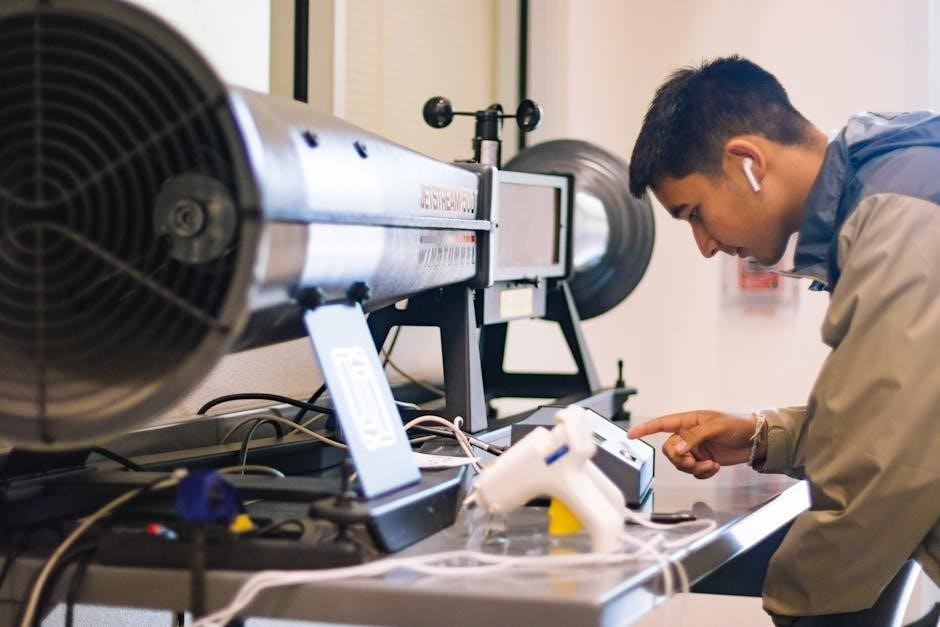Prepare for your U.S. History final with our guide.
Explore key topics, events, and figures to ace your test.
Showcase your understanding of American history and impress your professors.
This guide offers effective study strategies for a fantastic grade!
Understanding the Exam Structure
The AP U.S. History exam presents a rigorous test of historical knowledge
from 1491 to the present. The exam is structured into two major sections,
Section I and Section II. Section I accounts for 60% of the total score.
Understanding this structure is crucial for effective preparation.
Section I includes multiple-choice questions and short-answer questions;
Section II consists of free-response questions, including a document-based
question (DBQ) and a long essay question (LEQ). Mastering the format of each
section is essential. Familiarize yourself with the types of questions and
the time allotted for each.
The DBQ requires you to analyze primary source documents and construct an
argument. The LEQ asks you to write an essay based on your knowledge of a
specific historical topic. Effective use of evidence and sophisticated
argumentation are key to success. Know the weights of each section.
The exam assesses your ability to understand and interpret historical
evidence. It also tests your skill in crafting well-supported arguments.
Prepare effectively by focusing on nuanced understanding and mastering
free-response techniques.
Key Historical Periods (1491-Present)
The AP U.S. History exam covers a vast timeline from 1491 to the present.
Familiarizing yourself with key historical periods is crucial for exam
success. These periods include the Age of Exploration, Colonial America, the
American Revolution, and the Early Republic.
The Civil War and Reconstruction era, the Gilded Age, and the Progressive
Era are also important. Additionally, understand the Roaring Twenties, the
Great Depression, World War II, and the Cold War.
The Civil Rights Movement, the Vietnam War, and the Reagan Era are essential
for a comprehensive understanding. Finally, cover the Post-Cold War Era and
the early 21st century. Knowing the major events, trends, and figures within
each period is vital.
Develop a strong grasp of the political, economic, and social developments
that shaped each era. Understanding the connections and transitions between
periods will enhance your ability to analyze historical trends. Use timelines
and other organizational tools to master this information.

Focus on the nuances of each period, rather than just memorizing dates. This
will help you tackle complex exam questions effectively.
Important Events and Figures
To excel in your American History final exam, focus on key events and
figures. Understand the significance of events like the American Revolution,
which redefined freedom in America. Study republicanism, virtue, democracy,
and the Pennsylvania Constitution.

Learn about suffrage, property qualifications, disestablishment, and the Bill
for Establishing Religious Freedom. Grasp the concepts of deism, free labor,
Adam Smith, and equality of opportunity.
Key figures include George Washington, Thomas Jefferson, and Abraham Lincoln.
Also, examine the roles of Frederick Douglass, Susan B. Anthony, and Martin
Luther King Jr. Understanding their contributions is essential.
The Civil War, World War I & II, and the Civil Rights Movement are crucial
events. For each event, know the causes, effects, and key people involved.
Analyze the impact of these events on American society and politics.
Be familiar with landmark Supreme Court cases like Marbury v. Madison and
Brown v. Board of Education. Knowing these events and figures will provide a
strong foundation. This will help you tackle various exam questions with
confidence.
Focus on Nuance and Evidence
Mastering nuance and evidence is key to success in your American History
final. It’s not enough to simply know historical facts; you must understand
the complexities and subtleties behind them. Focus on the “why” and “how” of
events, not just the “what.”
Develop the ability to analyze different perspectives and interpretations of
historical events. For example, consider the various motivations behind the
American Revolution or the different experiences of people during the Great
Depression. This nuanced understanding will help you craft stronger and more
compelling answers.
Evidence is critical to supporting your arguments. Learn to effectively use
primary and secondary sources to back up your claims. Primary sources might
include letters, diaries, or government documents, while secondary sources
are analyses and interpretations of historical events.
Practice using evidence to build a strong, well-supported argument. This
skill is particularly important for essay questions, where you’ll need to
demonstrate your ability to think critically and present a coherent analysis
of historical events.
Mastering Free-Response Questions
The free-response section is a crucial part of your American History final
exam, demanding not only factual knowledge but also analytical and writing
skills. To excel, practice constructing well-organized, thesis-driven essays
that directly address the question. Begin with a clear and concise thesis
statement, outlining your main argument.
Support your thesis with specific historical evidence. Use primary and
secondary sources to strengthen your claims, demonstrating a deep
understanding of the material. Each paragraph should focus on a specific
aspect of your argument, providing detailed examples and analysis.
Pay attention to the prompt’s wording. Understand what the question is
asking – whether it’s comparing and contrasting, analyzing causes and
effects, or evaluating a historical argument. Tailor your response to
directly address the prompt’s requirements.
Practice time management. Allocate a specific amount of time for each essay
and stick to it. It’s better to write a complete, if somewhat concise, essay
than to run out of time and leave an essay unfinished.
Finally, review your essays for clarity, grammar, and accuracy. A
well-written essay demonstrates not only knowledge but also a command of
language and critical thinking skills.
Effective Memorization Strategies
Memorizing key dates, events, and figures is essential for success on your
American History final exam. However, rote memorization alone is not
enough. You need to employ strategies that help you understand and retain
information effectively.
One effective technique is to use mnemonic devices. Create acronyms, rhymes,
or visual images to associate with specific historical facts. For example,
you could use the acronym “DREAM” to remember the causes of the Civil War:
“Division, Rights, Economics, Abolition, Military.”
Another strategy is to create timelines. Visualizing historical events in
chronological order can help you understand the relationships between them
and remember when they occurred. You can create timelines on paper or use
digital tools.
Teach the material to someone else. Explaining historical concepts to others
forces you to solidify your understanding and identify any gaps in your
knowledge. This can be done with a friend, family member, or study group.
Finally, break down large amounts of information into smaller, more
manageable chunks. Focus on mastering a few key concepts each day rather
than trying to cram everything in at once.
Creating a Study Schedule
Organizing your study time is crucial for success. A well-structured study
schedule will help you cover all the necessary material without feeling
overwhelmed. Start by assessing the amount of time you have before the exam
and the amount of content you need to review.
Allocate specific time slots for studying American History each day or week.
Consistency is key, so try to stick to your schedule as much as possible.
Break down the material into smaller, more manageable topics.
Prioritize topics based on their importance and your level of familiarity
with them. Spend more time on areas where you need the most improvement.
Be realistic about how much you can accomplish in each study session.
Avoid cramming by spreading out your study time over several days or weeks.
Incorporate breaks into your study schedule to avoid burnout. Take short
breaks every hour to stretch, walk around, or do something relaxing.
Schedule longer breaks for meals and other activities.
Regularly review and revise your study schedule as needed. If you find
that you are falling behind, adjust your schedule accordingly.
Daily Study Routine
Establishing a daily study routine is vital for consistent progress. Begin
by setting aside a specific time each day for studying American History.
Choose a time when you are most alert and focused. Create a dedicated
study space free from distractions. This will help you concentrate and
retain information more effectively.
Start each study session with a brief review of the previous day’s material.
This will reinforce your understanding and help you connect new information
to what you have already learned. Next, focus on new topics or areas where
you need improvement. Use a variety of study methods, such as reading
textbooks, reviewing notes, and creating flashcards.
Incorporate active recall techniques into your daily routine; Test yourself
on the material regularly to identify areas where you need more practice.
Take short breaks every hour to avoid burnout. Use these breaks to stretch,
walk around, or do something relaxing. End each study session with a
Regularly assess your progress and adjust your routine as needed.
Consistency is key, so try to stick to your daily study routine as much
as possible.
Utilizing Flashcards
Flashcards are an excellent tool for memorizing key terms, dates, and
historical figures. Create flashcards for each major topic in American
History. On one side of the flashcard, write a question or term. On the
other side, write the answer or definition.
When creating flashcards, focus on the most important information. Use
clear and concise language. Organize your flashcards by historical period
or topic. This will make it easier to review specific areas of American
History. Regularly review your flashcards to reinforce your knowledge.
Carry your flashcards with you and use them during downtime. This will
allow you to study on the go. Use flashcard apps to create and review
digital flashcards. Digital flashcards offer features such as spaced
repetition and progress tracking. Test yourself frequently using your
flashcards. Shuffle the flashcards to avoid memorizing them in a specific
order.
Work with a study group and quiz each other using flashcards. This can
make studying more engaging and help you identify areas where you need
more review. Regularly update your flashcards as you learn new
information. Remove flashcards for topics you have mastered to focus on
areas where you need more practice.

Active Recall Techniques
Active recall is a powerful study technique that involves retrieving
information from memory without looking at your notes or study materials.
This method strengthens your understanding and retention of the material.
One effective active recall technique is the question-and-answer method.
Create questions based on your notes and readings. Then, without looking
at your notes, try to answer the questions. Check your answers and
review the material you struggled with. Another technique is the teach-back
method. Pretend you are teaching the material to someone else. Explain
the concepts in your own words.
This will help you identify gaps in your understanding. Use the Feynman
Technique, which involves explaining a concept in simple terms as if you
were teaching it to a child. This forces you to break down complex ideas
into their fundamental components. Mind mapping is another useful
technique.
Start with a central topic and branch out with related ideas and concepts.
This helps you visualize the connections between different pieces of
information. Practice free recall by writing down everything you remember
about a specific topic without consulting your notes. Review your notes
afterward to identify any gaps in your knowledge.
Review of Notes and Timelines
Regularly reviewing your notes is crucial for reinforcing your knowledge
and retaining information. Start by organizing your notes into a logical
structure, grouping related topics together. This will help you see the
big picture and understand how different events and concepts are connected.
Read through your notes carefully, highlighting key points and summarizing
important ideas.
Create concise summaries of each topic to help you remember the main
takeaways. Timelines are essential tools for understanding the chronological
order of events and their relationships. Create a comprehensive timeline
that includes major events, key figures, and important developments in
American history. Use different colors or symbols to categorize events and
make the timeline visually appealing.
Review the timeline regularly, paying attention to the sequence of events
and their causes and effects. Look for patterns and trends in history to
help you understand the broader context. Connect events on the timeline to
the concepts and ideas in your notes to create a more complete picture of
American history.
Use the timeline to test your knowledge by trying to recall the events
that occurred in a specific period. Compare different timelines to see
how historians interpret the past. Review your notes and timelines
together to reinforce your understanding and prepare for the exam.
AP US History Resources and Tips

To effectively prepare for the AP US History exam, take advantage of the
abundant resources available. Start with the College Board’s official AP US
History course and exam description. It outlines the exam’s content,
structure, and scoring guidelines. This document serves as a roadmap for
your studies.
Utilize reputable textbooks and study guides that cover the entire AP US
History curriculum. Look for resources that offer clear explanations,
practice questions, and helpful tips. Online resources, such as Khan
Academy and Crash Course US History, provide engaging videos and
interactive exercises. Supplement your learning with primary source
documents and historical articles.
Engage with different perspectives on historical events to deepen your
understanding. Form a study group with classmates to discuss challenging
topics and share insights. Practice answering free-response questions and
DBQs to develop your analytical and writing skills. Seek feedback from your
teacher or tutor to improve your essays.
Familiarize yourself with the AP US History rubric to understand how your
essays will be graded. Manage your time effectively during the exam by
allocating specific amounts of time to each section. Stay calm and focused
during the test. Remember to read each question carefully and answer it to
the best of your ability.
Practice Questions and Tests
To excel on your American History final exam, consistent practice with
various question formats is crucial. Begin by reviewing past exams and
sample questions provided by your instructor. These resources offer valuable
insight into the types of questions you can expect and the level of detail
required in your answers.
Utilize online platforms and study guides that offer practice quizzes and
full-length practice tests. These tools allow you to assess your knowledge
and identify areas where you need further review. Simulate exam conditions
by setting a timer and minimizing distractions while completing practice
tests.
After each practice session, carefully review your answers and identify any
mistakes. Understand why you made those errors and take steps to correct
them. Focus on mastering the key concepts and themes covered in the course.
Pay attention to the wording of questions and ensure that your answers
directly address the prompt.
Consider using flashcards to memorize important dates, names, and events.
Active recall techniques, such as self-testing, can help reinforce your
knowledge. Seek feedback from your instructor or classmates on your practice
responses. By consistently practicing and reviewing, you can build
confidence and improve your performance on the final exam.
